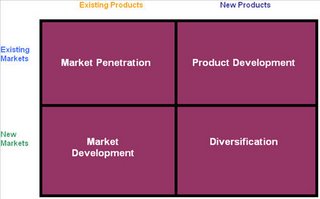Thanks for sticking with me through Part 4 of 4 of this series of posts: Additional Considerations & Final Thoughts! Here, I list an assortment of odds and ends for your consideration.
By now it has probably become apparent that bringing potential patrons into the fold means relinquishing the status quo. Whether you're changing your objectives, your services, your tactics or your target market, the bottom line is that you have to change something to draw in users or else they'd already be regular patrons! Doing so takes an institutional commitment to change and may also require major overhauls of services or facilities as well as additional funds. In fact, a key to turning non-users into users is a future-oriented, progressive approach to planning. We should always keep an eye on trends and events that offer opportunities to reach out to new users, or to reach out to current users in new ways. Changes in technology, the economy, and social life are just some of the factors that can create new and exciting venues for library services.
The pursuit of new customers is a familiar aim of both librarians and marketers, and as such, both the library and business literature offer some guidance on this topic:
The Ansoff Matrix has been a popular tool among business-types in helping them to make decisions about their growth objectives. Turns out, there's more than one way to grow a business (or a library, for that matter). Here's the Matrix as drawn by yours truly:
According to the model, you can adopt one of four strategies: market penetration, market development, product development or diversification. If, for example, you want new patrons to use your existing services, then a market development strategy is for you. As we talked about previously, sometimes it takes new products to lure in new patrons, and so a diversification objective would be appropriate. There's a nice tutorial and exercise with this model on marketingteacher.com that demonstrates how to put this tool to use.
From the library world, take a look at an article from a special librarian perspective by Grace McCarthy called, Getting to Know Your Non-Users. McCarthy offers tips for figuring out why patrons aren't using your library and the advantages and disadvantages of seeking their patronage. Interestingly, she also addresses the importance of managing patrons' expectations which, if unrealistic, can lead to non-use.
Librarians face an important and somewhat unique challenge when it comes to reaching out to potential patrons. In the business world, many marketers may say that not everyone will like your product or service, so it's best to forget about those people and focus on the ones who are most likely to buy what your selling. There's some truth to this. We can't expect that everyone in our communities will make use of our resources. But unlike business-types, we are charged with the sometimes daunting though ultimately rewarding task of making our holdings come alive for every person even if we're not always successful. Sure, we have to manage our resources responsibly and be fairly realistic in our aims, but ultimately we need to keep the big picture of intellectual freedom in sight. This worthwhile challenge presents an opportunity to apply a great deal of creativity and energy in taking the "non" out of "non-user."
Good luck! And, as always, feel free to share your thoughts and experiences!
Categories: tips_to_try | usable_theories
Monday, August 07, 2006
Taking the "non" out of "non-user": Part 4 of 4
Subscribe to:
Post Comments (Atom)


 Libraries are more than just collections of books and other materials. Libraries are dynamic forces in their communities with the power to improve lives. Modern marketing demands that librarians look beyond their traditional roles ("outside the book") to find new ways to connect with people and further their success.
Libraries are more than just collections of books and other materials. Libraries are dynamic forces in their communities with the power to improve lives. Modern marketing demands that librarians look beyond their traditional roles ("outside the book") to find new ways to connect with people and further their success.


2 comments:
Hello. I tried to click on your article about non-users, but the site said I did not have access to the document. I would really like to read it. Any hints?
Hi, Carla! Thanks for the comment. Unfortunately, I didn't find a freely-available version online. I provided a link to the citation so you'd have all of the identifying info. You'll have to check if your library has a subscription to the journal or if you can interlibrary loan it. Let me know if I can be of more help!
Post a Comment